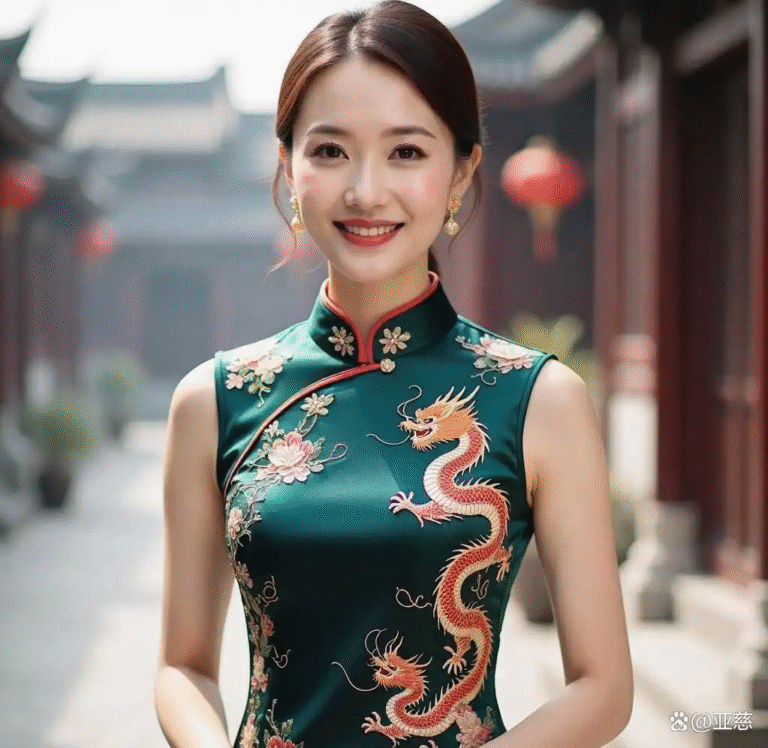A casual qipao better meets market demands
Traditional qipao, as a representative symbol of Chinese clothing, embodies the charm of Oriental aesthetics. As a common attire for women in the Republic of China period, to satisfy the needs of the general public today, the modern casual qipao has undergone several rounds of modernization and innovative evolution. What kind of expressive power does it have? In such a rapidly updating traditional clothing market, how has it managed to secure a place?
Modern casual qipao break through the design framework of traditional qipao, integrating modern aesthetics and focusing on practicality, eliminating occasion restrictions, and redefining the image of qipao in people’s hearts, making qipao no longer exclusive to those with good figures.

what aspects have modern casual qipao been improved?
The design elements of the traditional qipao are “garment continuity, suitable waist” silhouette, retaining regulations such as standing collar, button toggle, and slit. The core design logic of modern casual qipao always originates from the structural elements of traditional qipao. For example, traditional qipao generally feature high slits. However, in modern society, high slits are not the best choice for some people. High slits may even affect one’s overall aesthetic appeal and are not suitable. Therefore, modern casual qipao have made flexible adjustments in this regard.

Improvements to the collar
Regarding the standing collar, modern designers have also made corresponding new designs. Generally, the standing collar of a cheongsam is mostly high-collar style, but the high-collar might carry certain traditional meanings, coupled with its inactivity and lack of flexibility, which no longer suit contemporary consumer needs. Therefore, the collar has evolved into low-collar or no-collar styles by designers, meeting the modern people’s needs for comfort without sacrificing aesthetics.

Different cutting methods
Furthermore, the overall cutting of traditional qipao is usually one-piece scattered cutting, typically with matching sleeves or consistent garment types. However, modern casual qipao adopt Western cutting techniques, making the qipao’s cutting process more efficient and three-dimensional, no longer confined to body wrapping. This transforms the flat cutting of qipao into a design that fits the human body curve, using elastic fabric combined with waist-cinching cutting to highlight the figure while enhancing wearing freedom. By absorbing different clothing design styles, modern casual qipao have evolved into various styles with more linear senses, such as short skirt styles, long skirt styles, and separate top styles, to meet different fashion pursuits.

Patterns and accessories
Modern casual qipao also transform different patterns and accessories into various fashion items. For example, traditional patterns like cloud patterns, sea and cliff patterns, and Ruyi patterns are abstracted into geometric lines. Or different patterns are freely matched through embossing technology to create a unique new oriental charm. On casual qipao, the corresponding frog buttons and decorative ornaments are also turned into detachable accessories by modern designers. Alternatively, invisible zippers are used to replace traditional handmade fasteners, simplifying the craftsmanship and enhancing the functionality at the same time. In terms of fabric selection, modern casual qipao increasingly have the flavor of modern craftsmanship, enhancing the overall shaping effect of the qipao.

The design of modern casual qipao is essentially a dialogue between traditional genes and contemporary life. It is neither a simple reproduction of the qipao of the Republic of China period nor a blind pursuit of Western trends. Instead, it constructs a new paradigm that combines cultural identity with practical value through deconstructing the classics, integrating technology, and reconstructing symbols. In the future, modern casual qipao will continue to write a modern chapter of Oriental aesthetics with a lighter posture.







